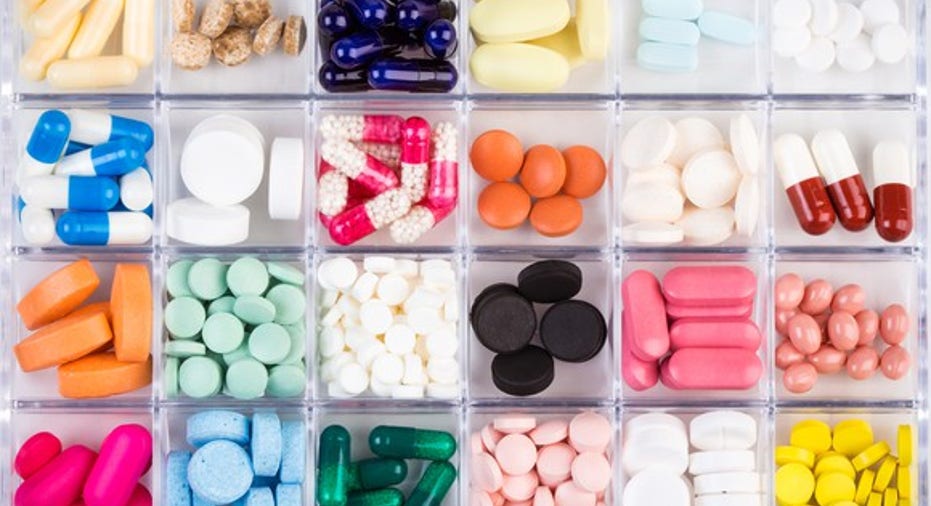3 Crucial Questions Gilead Sciences Should Answer Tuesday

It's the most wonderful time of the quarter. The time when every business cracks open its books and tells us what's going on.
Everyone wants to know about revenue, and adjusted EPS, and the like. But, while those numbers are useful -- particularly as a way of measuring success -- I'm a lot more interested in understanding the underlying strategy that will ultimately feed into sales and earnings. Here are the three things I most want to learn when Gilead Sciences (NASDAQ: GILD) reports earnings on Feb. 7.
Image source: Getty Images.
Has Hepatitis C finally stabilized?
After a couple years of jaw-droppingly high sales post-approval, Gilead Sciences' Hepatitis C (or HCV) drugs Sovaldi and Harvoni have come down to earth. Gilead's worldwide HCV sales plummeted by 31% year over year last quarter, as lower patient starts -- and lower prices, to preserve market share -- ate into the company's top line.
Given that these drugs are cures, Gilead -- and its competition, which together split less than 15% of the HCV market -- treated many of the sickest patients first. It has now moved on to healthier patients, whose doctors may feel a little less urgency to jump through the bureaucratic barriers insurance companies are throwing up. While Gilead largely controls the market, competitor drugs forced it to reduce prices -- as did its expansion into treating Medicaid and VA patients.
All of that combined to reduce HCV revenue significantly, and management doesn't know where the bottom is. Hopefully that's changing -- so I'll be parsing their words very carefully to learn more about what they see for the future.
Which -- and how many -- patients are switching to Genvoya?
Gilead has begun bringing its TAF-based HIV regimens to market, and chief among them is Genvoya. TAF-based cocktails have a key advantage over Gilead's Viread-based combos, given that they avoid the nasty long-term bone demineralization problems specific to Viread. Given that most HIV patients are on meds for a long time, that was becoming a major market share issue for Gilead. Not to mention the fact that a generic Viread is set to hit the market in 2017, with competitors to the other Viread-based cocktails soon to follow.
Genvoya is primarily picking up patients who are switching from other drugs -- roughly 90% of whom are switching from Gilead drugs to Genvoya. Normally that would be considered a bad thing -- nobody wants to cannibalize their own franchise -- but long term, that will help Gilead avoid market share erosion by Viread-based generics as those patents roll off. So far, Genvoya has had the most rapid uptake of any HIV drug ever, earning this priceless quote from Gilead COO Kevin Young last quarter (courtesy of S&P Market Intelligence):
A general update on how many patients are switching to Genvoya will be good. But I'd be most excited to see that 90% number tick down a little bit, even as patient volume swells -- that would mean Gilead is successfully expanding its roughly 80% U.S. HIV market share with the addition of Genvoya and the other TAF regimens.
What's the (cash) plan?
Gilead has a lot of cash. Wall Street wants it to buy another company with it to bolster a pipeline that's generally viewed as relatively unimpressive. While management has (correctly) resisted the Wall Street urge to overpay for growth, the fact of the matter is that Gilead has a lot of dry powder and should probably spend it on something at some point.
Of course, that doesn't have to be mergers and acquisitions. As of the end of Q3, Gilead had paid out $10 billion to repurchase 110 million shares in 2016, helping reduce its diluted share count by a whopping 11%. Given that Gilead has (at last count) $31.6 billion in cash and investments, management could return a ton of value to shareholders by reducing share count.
This is a particularly attractive time because the price has been beaten down so badly -- Gilead currently trades for around seven times trailing-12-month earningsand is off over 35% from its highs in mid-2015. Hypothetically, let's say that Gilead put $21 billion of its $31.6 billion into share repurchases at an average cost of $73 per share (roughly where prices are today). That would leave it a nice cash cushion, and it would enable the company to reduce share count by around 288 million shares -- or roughly 21.5% of diluted shares outstanding.
That could be a frighteningly effective way to reduce share count while management waits for the pipeline to mature, and it would also save the company from having to pay out its 2.5% annual dividend on all of those extra shares.
Regardless, Gilead should strongly consider putting that cash to work for the business. I'd like to learn what management's plans are.
What strategy will take shape?
All of these questions are really another way of asking: What does the future look like for Gilead Sciences? And no one can know that. But these tea leaves should help us get a much better idea.
10 stocks we like better than Gilead Sciences When investing geniuses David and Tom Gardner have a stock tip, it can pay to listen. After all, the newsletter they have run for over a decade, Motley Fool Stock Advisor, has tripled the market.*
David and Tom just revealed what they believe are the 10 best stocks for investors to buy right now... and Gilead Sciences wasn't one of them! That's right -- they think these 10 stocks are even better buys.
Click here to learn about these picks!
*Stock Advisor returns as of January 4, 2017
Michael Douglass owns shares of Gilead Sciences. The Motley Fool owns shares of and recommends Gilead Sciences. The Motley Fool has a disclosure policy.